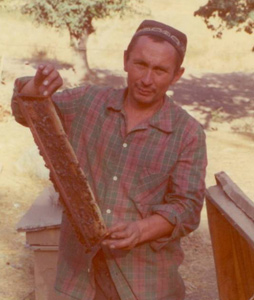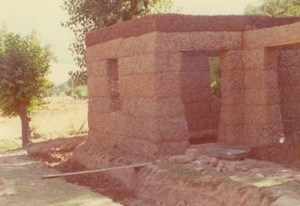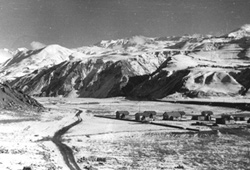
Home
Stories
Links
Guestbook
Forum
Contact us


Notice: Undefined index: last in /home/rbbw2/8.rbbw2.z8.ru/docs/content.php on line 7
- 2019-2020
- The geography
- base of Complex Seismological Expedition
- Garm
- Shul
- Chusal, Khait, North profile
- Dzhirgital, Tadjikabad
- Novobad, Komarou
- Runou, Kul, the other side of Surkhob
- Obikhingou, South profile
- Голубой берег, дорога на Душанбе, Оби-Гарм
- Dushanbe
- Varzob, Nurek
- Landscapes
- Pamir
- Talgar
- Киргизия
- Moscow
- Athens
- Krasnodar
- Magadan
- USA
- Family photocollections of
- Гарм спустя 30 лет...
- Ретро-альбом Зои Халтуриной
- Юрия Алексеенко
- Oleg Lapeha
- Timur Sinchileev
- Kourov Viktor
- Semenov A.
- Mirzoev Davlat
- Александра Попова, оператора МГД отряда.
- Зокирова Хусейна
- Владимира Фомина (hazorskiy)
- Baklushina Irina
- Haled Hametov
- Глушковых
- Sergej Pautov
- Semenikhins
- Ira Kiseleva
- Sherali Jononov
- Ushaevs
- Akbar Nazriev
- Evgeniya Umarova
- Dosalievs
- Dmitry Maximov
- Iya Shengelia
- Daler Makhmadov
- Nikolay Ponomaryov
- Golubevs
- Bakhtiyor Rakhmonov
- Gazizovs
- Segey Aptikaev
- Galina Bikova
- Tamara Guseva
- Tanya Zhavoronkova
- Olga & Masha Pavlov
- Olga Nikifirova
- Vitaly "Stefanich" Ponomarev
- Vladimir Zhuravlev
- Alik Lukk
- Alex Borovikov
- Vova Malishev
- Vladik Martynov
- Sergey Kutenets
- Stas Pisarev
- Ruzaykins
- Lyuba Chepkunas
- Alisher Partoev
- Artiom Suhodolov
- Kunakovs
- Olga Krivosheeva-Malkova
- Viktor & Andrey Nesterenko
- Filippovs
- Peter Molnar
- Khalturins
- Unknown sources
- People
- Children
- Group photos
- Our Americans
- Sport - soccer, volley-ball...
- People from stations
- ChISS
- МГД-отряд
- Hikes
- Great gardeners
- So young, so beautiful
- Big Love
- Wow!!!
- Первым делом, первым делом - вертолеты...
- Дембельский альбом
- Great scientists
- Portraits
- International friendship
- People from Garm & Shul
- People from Talgar
- In memorium
- Evidences of the era
- Today
- Jokes
- НОВОЕ
Dear friends! Welcome to the Garm web site!
Since you are already here, then there is no need to explain what does Garm and К.С.Э. mean... You remember that it means beautiful mountains, fresh air, hot sun, and hot discussions about life, love, science, and politics. It means a lot of Plov, Vodka, friends, soccer matches and singing songs. Maybe, the beautiful mountains and good friends were more important, than seismology.
Thank you for being TOGETHER with us during those happy-happy days! Many-many years have passed, there is no К.С.Э. now, but we still remember Garm, and we still remember you. We still are your friends!
If you would like to add your photos or memoirs to this site, please, write us!
Olga Khalturina & Maya Khalturina
:))
Maya Khalturina. A strange question about Garm from Brian Tucker.
 Dear friends! Brian Tucker send me an interesting letter – he has a question about something that someone told him in Garm in about 1981. He wrote in his journal what was told to him, but he is not sure that the person was telling him the truth. I hope - somebody from the KSE in Garm or from Chusal might be able to say if they think this is a true story.
Dear friends! Brian Tucker send me an interesting letter – he has a question about something that someone told him in Garm in about 1981. He wrote in his journal what was told to him, but he is not sure that the person was telling him the truth. I hope - somebody from the KSE in Garm or from Chusal might be able to say if they think this is a true story.
Here is the story from his letter:
«When I was visiting Garm the last time, in 1981 (I believe), I went to the Chusal seismic station. There I met the Tajik who I had known for many years. I believe his name is Borot. He did routine maintenance work in Chusal and he was a beekeeper. I have attached a picture of Borot. When I was there in 1981, Borot invited me to have tea in his home. He lived in the very small valley immediately to the west of Chusal. I don’t know the name of this valley, but I have located it on Google Earth, and here are the coordinates: 39 degrees 06 minutes 35 seconds North, and 70 degrees, 45 minutes East.
When Borot served me tea, in his home, I noticed that this home was built completely differently than all the other homes I had seen in the Garm region. The “typical” home construction in Garm had simple adobe (mud) walls. Over the doors and windows were thin planks of wood. There was no other wood used in these typical homes. I have attached a picture of such a home that I saw built in Shul, near the KSE base. Borot’s home had, in each corner, a large tree trunk (Do you know the word “trunk”? It means the main, large part of a tree, not one of the branches). By “large”, I mean about 15 cm in diameter. Borot told me that the bottom of each tree trunk was resting in a carved hole in a board that went along the base of the wall. Also, the top of each tree trunk was inserted into a carved hole in a board that went along the top of the wall. The boards on the top of the walls were connected to the ceiling. You can see from the attached photo that the Shul house didn’t have any such tree trunk in the corners. The type of construction in Borot’s house would make the walls stronger in an earthquake.
 I asked Borot why the house was constructed in this unusual way, and he said that his father built the house in this way, and he thought it would make the house stronger in case of an earthquake. He built all the structures in his family “compound” in this way. I asked Borot if his house was built before the 1949 Khait earthquake, and he said “Yes.” I asked how it reacted to that earthquake, and he said something like “you can see that it was fine, not heavily damaged. None of the houses in my father’s compound were damaged.” I had noticed that, when I was visiting the Garm region, there were no other homes in that valley where Borot lived. I asked if there were other homes in the valley in 1949. Borot said that there were many. I asked what happened to them in the earthquake. He said that they were all destroyed by the earthquake. I asked how they were built. He said “in the traditional way” that is, with NO tree trunks in the corners. I then said something like “If I understand you correctly, all the buildings that were constructed in the typical way were destroyed, and all the buildings of your father, which were built in this unusual way, survived the earthquake. Is that correct?” He said “Yes.” I then said, jokingly, “when you build homes for your children, Borot, what method will you use?” He answered, “why in the traditional way, of course. Why do you ask?”
I asked Borot why the house was constructed in this unusual way, and he said that his father built the house in this way, and he thought it would make the house stronger in case of an earthquake. He built all the structures in his family “compound” in this way. I asked Borot if his house was built before the 1949 Khait earthquake, and he said “Yes.” I asked how it reacted to that earthquake, and he said something like “you can see that it was fine, not heavily damaged. None of the houses in my father’s compound were damaged.” I had noticed that, when I was visiting the Garm region, there were no other homes in that valley where Borot lived. I asked if there were other homes in the valley in 1949. Borot said that there were many. I asked what happened to them in the earthquake. He said that they were all destroyed by the earthquake. I asked how they were built. He said “in the traditional way” that is, with NO tree trunks in the corners. I then said something like “If I understand you correctly, all the buildings that were constructed in the typical way were destroyed, and all the buildings of your father, which were built in this unusual way, survived the earthquake. Is that correct?” He said “Yes.” I then said, jokingly, “when you build homes for your children, Borot, what method will you use?” He answered, “why in the traditional way, of course. Why do you ask?”
This conversation has haunted me ever since, for many reasons. I wish that I had asked more questions and spoken to other people about this. I feel confident that I have remembered the conversation with Borot correctly, because I wrote it down in my journal that night and I still have that journal with me. Perhaps Borot wasn’t remembering correctly, or perhaps he was telling me things that he thought I wanted to hear.
Of course, I can’t understand why Borot wouldn’t want to build homes in the way his father did. I wonder how Borot’s father understood that this was a good method of construction. I wonder if there were tall trees in the Garm region before 1949. I don’t see many trees in the photo I have of the KSE in about 1952 (see attached photo).»

So the question is: what do you think about this story? Do you think it is true? Do you think that Borot’s father could have built such a house? Were there trees in the Garm region at that time?... and so on...
If you can help us to understand this story – please, write me at: garmkie @ mail . ru
Maya Khalturina
Notice: Uninitialized string offset: 0 in /home/rbbw2/8.rbbw2.z8.ru/docs/story.php on line 37
Notice: Uninitialized string offset: 0 in /home/rbbw2/8.rbbw2.z8.ru/docs/story.php on line 37
| << "Слушая пульс Земли". Газета "Коммунист Таджикистана". 22 апреля 1989 года. | SSA Medal Citation for Tanya Rautian by Peter Molnar>> |
Notice: Undefined index: pf in /home/rbbw2/8.rbbw2.z8.ru/docs/story.php on line 59
|
Notice: Undefined offset: 1 in /home/rbbw2/8.rbbw2.z8.ru/docs/lib.php on line 158 Notice: Undefined variable: str_feedback in /home/rbbw2/8.rbbw2.z8.ru/docs/lib.php on line 162 трудно поверить, сколько ездил ходил, никогда не встречал Алишо, 27.08.2011
|
Notice: Undefined index: name in /home/rbbw2/8.rbbw2.z8.ru/docs/lib.php on line 197
Notice: Undefined index: email in /home/rbbw2/8.rbbw2.z8.ru/docs/lib.php on line 199
Add your opinion
- 14.05.2019. Гарм КСЭ через 30 лет.
Дорог... - 18.01.2014. Питер Молнар - лауреат премии ...
- 21.04.2011. Медаль Рида - Татьяне Раутиан!...
- 08.11.2009. Первым делом - вертолеты...
... - 31.01.2009. Обновления на сайте! Новые ссы...
All feedback
Latest feedback:
- Алишо, ты обещал узнать про Пирмахма...
Помню Бориса Палыча Волина - при нем...
Спасибо, девочки, за сайт! Я там род...
Привет...
Спасибо за ваш сайт. Я бывал в Гарме...
Работали на станциях Хаит, Чусал, Но...
5507...
Мой адрес V_usenko@ukr.net...
Добрый день, Анатолий! Прими мои соб...
Как определить дату этого снимка? Ви...
Мой дед, Виталий Пономерев умер 17.0...
Мне очень понравился это сайт. Спаси...
Великолепная фотография. Спасибо!...
Потерялся Виталий Стефанович. Если е...
Любимый дедушка, лучший человек на с...
Спонсор сайта - интернет-магазинчик "Для пышных красавиц"

Сайты наших друзей и земляков:
---------------------------------
Анастасия Коляда, она же Стася, внучка В.И.Халтурина, инструктор по горным лыжам, научит вас кататься на лыжах и сноуборде:
